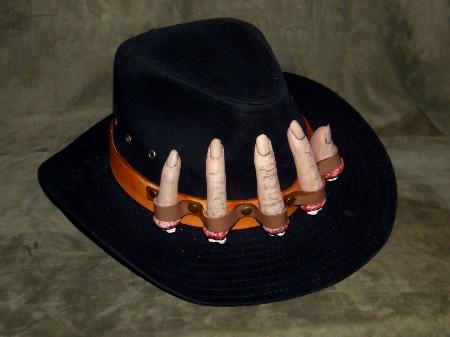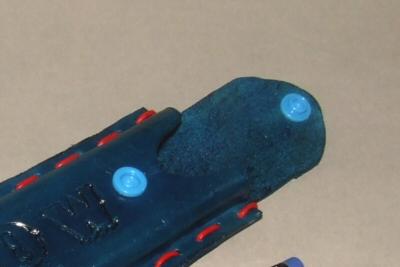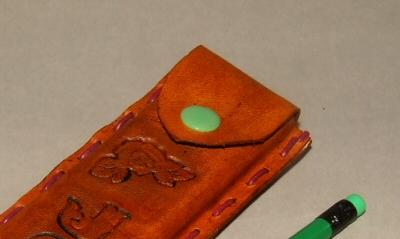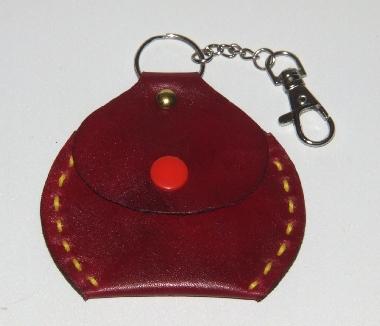-
Posts
5,932 -
Joined
Content Type
Profiles
Forums
Events
Blogs
Gallery
Everything posted by fredk
-
Almost 2 weeks ago I went looking for a large plastic envelope containing nearly 50 A5 sized sheets of double-sided sticky. I had used a few sheets just a few days before. I spent a few days looking for it. I looked in the usual places and even in the unusual places. I couldn't find it so I ordered another 50 sheets which arrived last Thursday. On Friday I started a search for my set of chopped-off fingers to get my hat band ready for this coming week. Even though I'd set them out early last week I couldn't find them.As I looked for the fingers I found the envelope of sticky sheets. Late on Saturday as I was putting some hardware away I found the fingers Then I went to put the new stock of 50 sticky sheets in with the old stock - but now I can't find them! Hat is ready though;
-
I too missed this one Its very nicey indeedy. An unusual pattern for it. Not seen anything like that afore
-
Interesting Good find
-
I use a beeswax mix rubbed on and burnished. Others on here use Gum Tragacanth
-
Its a very nice set. Clever idea using elastic on the bottle sleeve @Klara they have to cover the label cos they don't have real whiskey ( but think tantalus) I've seen plenty of bottles of whiskey. I wanna see a picture of the Rodeo Queen,
-

Shopping cart security tokens
fredk replied to Klara's topic in Purses, Wallets, Belts and Miscellaneous Pocket Items
Same thing in three different countries -

Shopping cart security tokens
fredk replied to Klara's topic in Purses, Wallets, Belts and Miscellaneous Pocket Items
I don't think it would work on trolleys here. They have a plastic slide in tray in which you put in a coin or token. Pushing in the tray releases the chain on the other end. But mostly we have gone coin-free, with auto-lock wheels on the trolleys -
If it helps you decide; I've seen restoration 'tags' on everything from old shotguns, vintage car engines, vintage car upholstery, old buildings, especially old churches or community halls and all sorts of things even on old aeroplanes If your work is good and you are proud to stand over it, then imo, put your restoration tag on it. And keep a record of what you did on it I found an old and corroded 'rebuilt by....' tag on my vintage car engine. The company was long gone by the time I got my car but a previous owner had contacted the engine rebuilder and got a copy of the works sheets which specified what had been done. It might be the same with a saddle; in the future an owner may contact you to find out what you had re-furbished
-

Shopping cart security tokens
fredk replied to Klara's topic in Purses, Wallets, Belts and Miscellaneous Pocket Items
KAM is the name of type of snap/popper They come in different sizes and a multitudinous of colours The most common size is T5, which I use most of of but there are many sizes. The next main size is T16. T5 are about 12.5mm across the cap and a 5mm post. Its only good for thin leather, up to about 1.8mm thick. T16 are 16mm across the cap with a 8mm post. There are variations but are hard to get You need a special tool to squeeze down the central post on the caps A full set of several hundred T5 snaps in different colours and the pliers can be bought for under or about 15 E T16 can be bought for about 6E per 100. The same pliers tool works with them. It usually comes with the necessary parts, as seen in the picture above eg; https://www.ebay.co.uk/itm/364488348551?var=0&mkevt=1&mkcid=1&mkrid=710-53481-19255-0&campid=5338749387&toolid=20006&customid=GB_14339_364488348551.146494749527~1869017347642-g_CjwKCAjw-eKpBhAbEiwAqFL0monctUkpe5DA2IkEdCAx9rn7xBA-i5-OHL4MsITycXFfb9qgPohu5xoC8bEQAvD_BwE I use them all the time on thin leather goods, like the key-ring purse or these pen cases -

Shopping cart security tokens
fredk replied to Klara's topic in Purses, Wallets, Belts and Miscellaneous Pocket Items
-
Try asking at a general automotive supply shop for those connectors. I've seen similar in SAAB and BMW cars
-

Spraying NFO
fredk replied to MarlinDave's topic in Dyes, Antiques, Stains, Glues, Waxes, Finishes and Conditioners.
My NFO is quite thick, until its warmed up considerably. You'd need to thin the NFO quite a a bit, especially for the finer airbrush But there is car equipment for spraying heavier oils. There is a car under body protective called Waxoyl. Its very thick and you can get spraying equipment for spraying it on to the underneath of cars. Your compressor needs to be powerful though eg. -
I've re-oiled all the pieces and put them back in the car. at approx 11.00 10/22 I noticed that the backs of all the pieces have returned to very nearly the original leather colour but the fronts were still dark. Except for #7 (Vaseline), both sides were actually a bit lighter than the test control piece
-
10/22 09.30 - up date All pieces - no fungus #2 has the faintest smell of oil (Rapeseed cooking oil) All other pieces smell faintly 'Leather' Pieces #3 (lard) and #4 (NFO Compound) are much more flexible than all the other pieces which are all about the same, a little bit stiffer than Control Piece #2 which is in my leatherwork room Night time temperatures inside the car dropped to about 5.6*, We have had a bad stormy weather the last week which gave very heavy overcast and cold days. Day time temperatures in the car was about a max of 7.6 to 8* Later today I'm going to give all pieces another dosing of their oils But so far it looks like all the oils or fats are fine with NFO Compound and Lard (pork fat) winning
-
Try getting magnets rated 50 or 51. They are the strongest. You can also add magnets to each other to increase the strength, BUT you can only stack a maximum of 10, thereafter you have a diminishing effect, each magnet after the 10 reduces the strength Your Thing is just great If you were to do this again, or if I was to do it, I'd reduce the size of the sewing holes and use finer thread just in red, and hide slim bar magnets under the finger nails
-
You have both made Supply both and let the client choose
-

Hand tool for setting rivets w/burrs in awkward locations??
fredk replied to ValkyrieEquine's topic in How Do I Do That?
I agree, a panel beater's dolly would do the job. If you can, search for very old panel beaters dollies. Some of the old ones had a bar for fitting into the hole on anvils. I had a great early 20th C. set of dollies'; about 15 different shapes, in a lovely fitted wood box, but only one shaft bar. The dollies were interchangeable to the bar. Alas, stolen along time ago -
Why don't WE do it? and get it set as a 'sticky' as another resource of info Info off the tins and our practical experience Start a new thread maybe and address the questions asked? PS, @Ornyal Get some Evo-stik adhesive cleaning fluid, It acts as thinner on neoprene glues. If the glue has not dried out too much it will bring it back to usefulness
-
@Sheilajeanne ah, there you are misunderstanding.There is Tea and there is Tea. Tea at 4pm is tea, oodles of it, served with light sandwiches or scones or tea-cakes and rarely crumpets, or strumpets for some, but never ever coffee. Then there is Tea, from about 5pm, the early evening meal, followed by dessert and then followed by tea Tea at 4pm is over by 4.20, 4.30 at the latest. Tea after 5pm lasts until 7pm at the latest, after that it starts to become Supper. Dinner is at mid-day-ish. Its a main meal whereas Lunch is at mi-day-ish but a light meal such as sandwiches, burgers et cetera When I was in RAF at one station the Station C.O. was a traditional English officer. Orders were all work stopped at 4pm for Tea. Everyone on the station stopped working for a 15- 20 minutes Tea. We had volunteers called NAAFI who had Tea vans and they arrived outside the building I worked in at about 3.55, set up and tea & buttered scones were ready at 4pm. A tea & scone cost 6d in old money, then 2 1/2p in the new money. (about 1c US) A nominal charge. And tea top-ups were free. Tea, scone and a ciggie at 4pm hth






